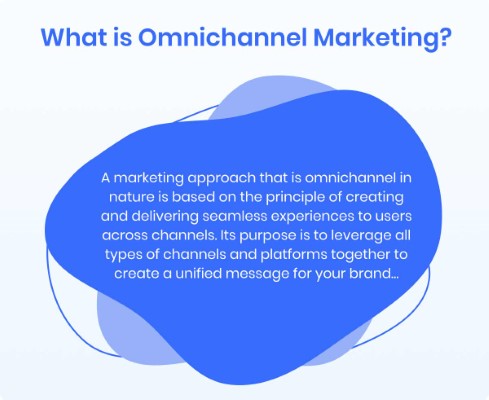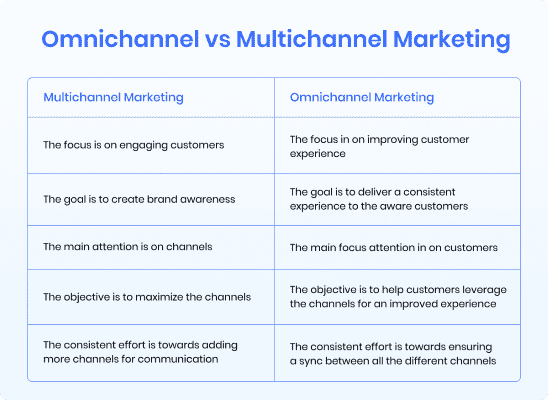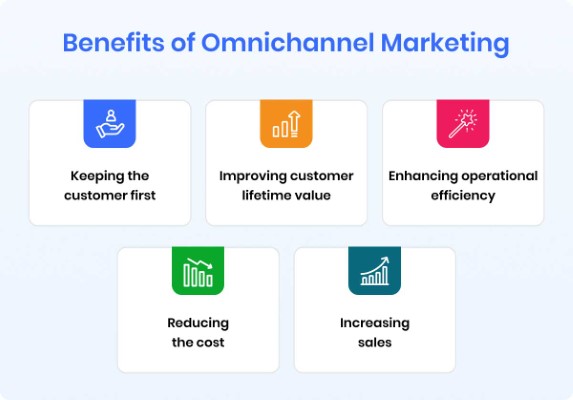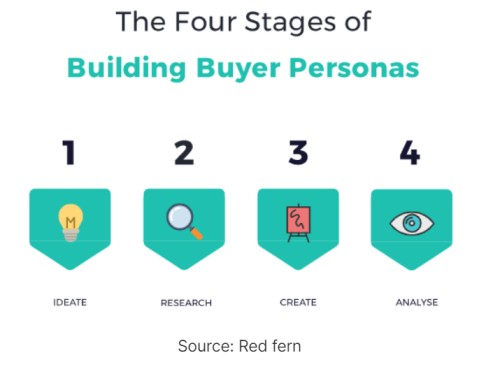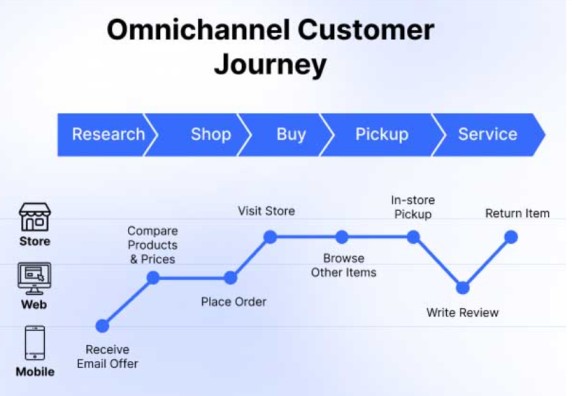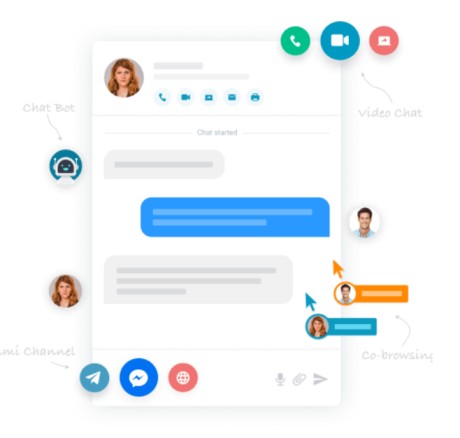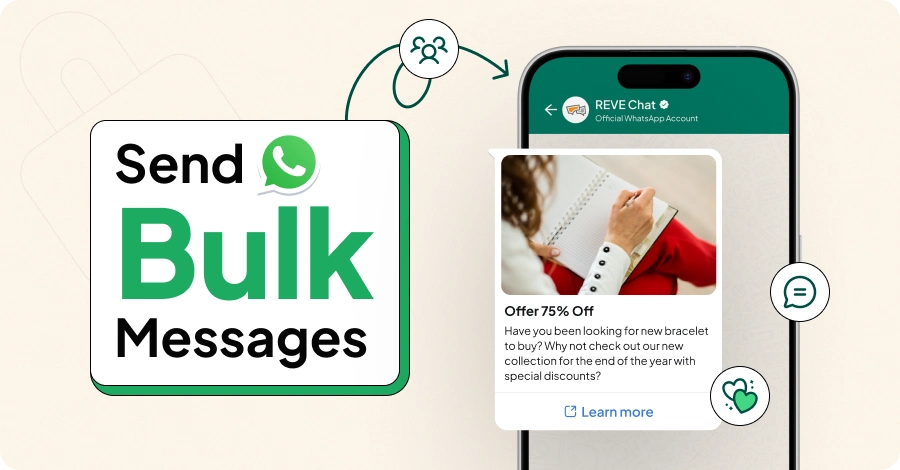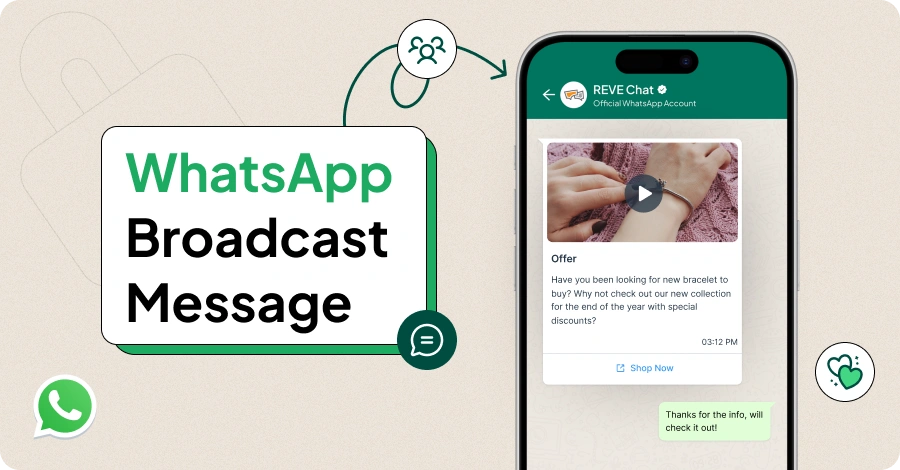Omnichannel Marketing – Benefits, Best Practices, and Examples
- December 7, 2022
- 11 mins read
- Listen
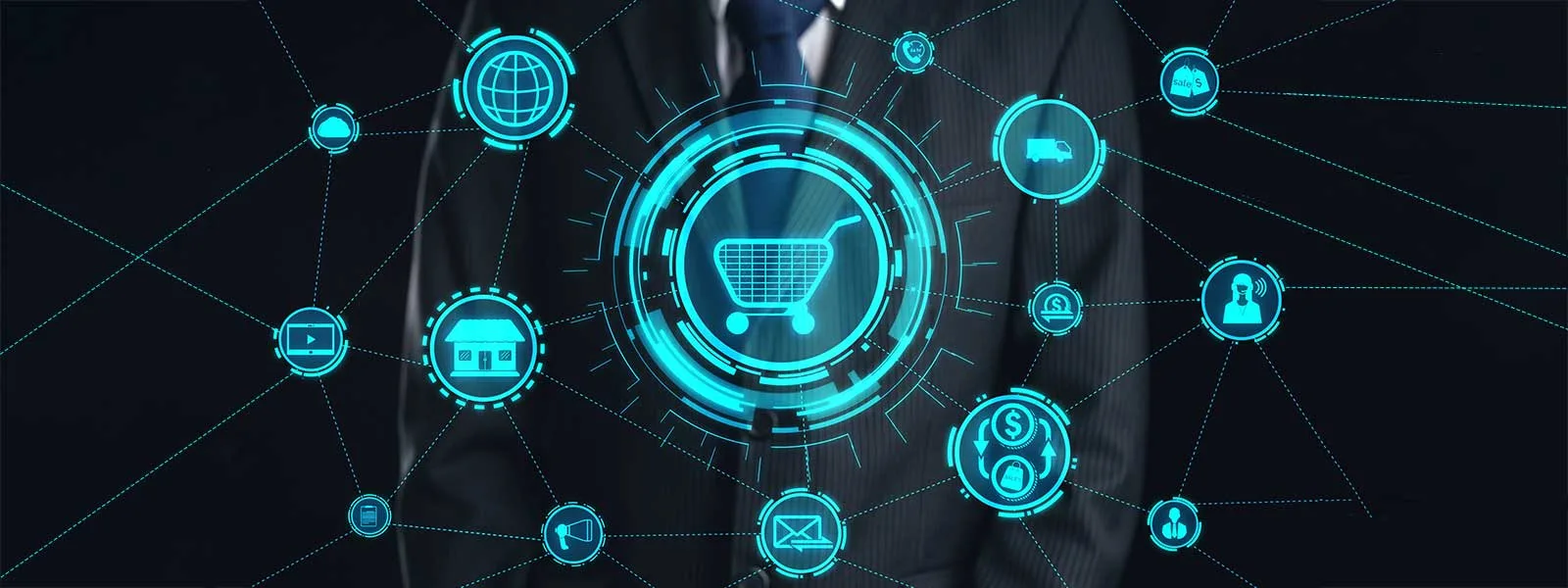
Customers often seek value when they engage or interact with a business in any capacity. They also want the flexibility to be served on the channel of choice. And getting a consistent experience across channels is something that always makes them happy.
Despite such expectations becoming quite common these days, many brands still try to stick with a single-channel marketing strategy, and hence they often fail to cater to their customers well. After all, when a business relies on just one or two channels, it fails to be where its customers are.
This is where the value of omnichannel marketing lies as it can help a lot in creating a unique experience for your customers. Using this strategy can also let you maximize your marketing ROI.
In this blog, we will discuss everything about omnichannel marketing strategy, its definition, benefits, significance, and best practices for your business.
What is Omnichannel Marketing?
A marketing approach that is omnichannel in nature is based on the principle of creating and delivering seamless experiences to users across channels. Its purpose is to leverage all types of channels and platforms together to create a unified message for your brand.
When we look at the omnichannel marketing definition, it states that it’s a planned and strategic integration of various channels to interact with consumers and ensure smooth experiences across touchpoints. This kind of marketing has evolved in recent years to focus more on creating a convenient user experience and bringing more than a few avenues for engagement.
Omnichannel vs Multichannel Marketing
Multichannel marketing has traditionally been the preferred way for most organizations as it is simple and cost-effective as well. On the other hand, omnichannel marketing may be complex and demands more resources for different stages, but it involves a better understanding of customers. Maybe that’s why when we look at omnichannel vs multichannel marketing, we can see why the former is gaining traction across industries as it ensures value creation for customers.
There are some fundamental differences between the two approaches of marketing, i.e. multichannel and omnichannel.
- While the multichannel approach focuses more on engaging customers, the real purpose of an omnichannel approach is to improve customer experience.
- Creating brand awareness is often one of the major goals of multichannel marketing whereas organizations use omnichannel marketing to deliver a consistent experience to aware customers.
- Another key difference here is that a multichannel approach focuses on channels, whereas an omnichannel strategy is customer-centric.
- In the multichannel approach, channels are always the main focus however it’s the customers that are at the center of attraction in an omnichannel strategy.
- If maximizing the channels is the real goal of a multichannel marketing approach, the Omni approach exists to let customers leverage the channels for an improved experience with the brand.
- The most important difference is, while a multichannel strategy is only about adding more channels for convenience, omnichannel marketing is to ensure a sync between all the different channels for a consistent user experience.
Benefits of Omnichannel Digital Marketing
Customers simply won’t do business with companies that don’t allow them the freedom to use their own preferred channels. They will only engage with brands that give them multiple channels to do interactions, and also transactions. Maybe that’s why more businesses now gradually shift towards adopting omnichannel marketing to ensure value to consumers at each step of the way. Marketers that do adopt this strategy better understand the purchase motivation and earn 287% higher purchase rates compared to a single channel.
Benefits are many more when a business decides to implement an omnichannel marketing approach.
- Keeping the customer first – Adopting omnichannel marketing is like putting the customer first above everything else as this approach is all about enhancing experiences across touchpoints.
- Improving customer lifetime value – Omnichannel shoppers bring a 30% higher lifetime value than those who stick to only one channel. And maybe that’s why implementing an omnichannel strategy ensures improved customer lifetime value.
- Enhancing operational efficiency – Going omnichannel means creating a holistic overview of the customer journey with the help of data. And once there is customer data, a business can focus on serving better rather than devising strategies for different channels.
- Reducing the cost – The cost of serving customers is more when there are different strategies for each channel. This is not the case with an omnichannel strategy where customer data once collected can help cater to them across various touchpoints.
- Increasing sales – Customers will spend more when they have the choice to use channels they like. Plus, a single channel restricts the opportunities for sales and that’s why more companies now look to switch to omnichannel marketing to drive sales.
Best Practices to Build A Successful Omnichannel Marketing Campaign
There is ample statistical proof that suggests how brands that invest in omnichannel marketing achieve higher customer satisfaction and retention. Any business can do this and make customers happy once it knows how to link together all the channels of communication for smooth engagement.
Building successful omnichannel marketing campaigns involves lots of strategies and work.
1. Create the ideal buyer persona
Unless you know the customers well, you’re never going to serve them well. Keeping this in mind, your first priority when adopting an omnichannel strategy is to create an ideal buyer persona.
The purpose of creating the persona is to represent the customers whose journey you need to map along the way. It will help you understand the buyer’s motivation, goals, and profile better which you can use for targeting purposes.
Once you have the buyer’s persona, you can –
- Increase value propositions in alignment with customer expectations.
- Provide customers with exactly what they need and thus avoid any mismatch between service and delivery.
- Adopt a customer-centric view and ensure the teams rally around the same cause in boosting the overall experience.
2. Map your customer journey
One of the key objectives of implementing an omnichannel strategy is to be aware of every customer interaction across touchpoints. This helps in understanding what customers need, what you deliver, and what you don’t.
And the purpose of mapping your customer journey stages is to bridge any gap that exists between the journey and the ultimate goals, i.e. to purchase a product. The map will help you know the issues your customers may face in achieving their goals.
Using the map, you will know all the customer interactions spanning different stages such as awareness, onboarding, and after-purchase. The map can ensure you make the journey smooth for your customers.
3. Identify the touchpoints your customers prefer the most
Touchpoints are where all the customer interactions take place. They are vital to understanding your customer’s journey in detail. Once you are aware of the touchpoints your customers prefer the most, you’re more likely to improve their experience.
More importantly, mapping the customer journey across touchpoints can put you in a position to not only identify customers’ preferences better but to meet them effortlessly as well.
Your business will benefit at many levels when you decide to identify the customer touchpoints, including –
- You will know how your customers feel at each stage of the buying process.
- You will know how your customers feel through different channels.
- You will engage the customers in their preferred way by being available across the channels.
- You will personalize the interactions at key touchpoints and hugely boost the overall experience with the brand.
4. Use advanced customer engagement tools
The ultimate purpose of an omnichannel marketing strategy is served only when there is the right technology at your disposal. Else, you will fail to strike a sync between various channels which can dilute, rather than enhance, customer experience.
Plus, you must first build the ideal technology model if you want to provide a hassle-free user experience. Those tools should also enable data flow in real time so that you can stay one step ahead of customers in the journey.
Three major engagement tools you need to deliver an omnichannel experience are –
- Chatbots – You will need an AI-powered chatbot to automate support, provide answers for customers’ queries and engage them round the clock across channels.
- Live Chat – The best way to provide real-time assistance to queries is by using live chat as it can surely boost customer satisfaction with your brand.
- Co-browsing Software – Collaboration with customers on the level of co-browsing together can ensure help with complex issues and also personalize the experience.
- Video Chat – Customers love video chat when it comes to being guided through challenging problems as this enhances their overall experience with your brand.
5. Select the right customer metrics & KPIs
All the customer interactions across key touchpoints would be meaningless if you did not track them using the right experience metrics and KPIs. So, your focus should be on fetching the customer data from the channels and then measuring it to get the result.
With the data in hand and with the analytics, you can track and measure every aspect of the customer journey and plan the next course of solutions for them. The data will also help you connect customer behavior to key metrics which you can improve and monitor over time.
And you also need to rely on data-driven insights if you want to deliver an omnichannel marketing experience to your customers. Some of the key metrics you should be tracking include Net Promoter Score (NPS), Customer Satisfaction Score (CSAT), or Customer Effort Score (CES).
Some of the Top Omnichannel Marketing Examples From Across Industries
A lot of brands now realize the value of implementing an omnichannel strategy to make customers happy and satisfied. Some of them have mastered the art to the next level by linking together channels and devices in a way that customers get a truly amazing experience across touchpoints.
Here we bring you some of the best examples of brands acing their omnichannel marketing strategies to the core –
Amazon
In the e-commerce space, nobody does deliver the kind of omnichannel experiences as the way Amazon does. It smoothly links all channels and interactions together via the website, mobile app, Alexa devices, and smartwatches. Plus, their Amazon card can be taken anywhere and all this makes not only placing orders easy but also tracking from any single device or point.
Bank of America
Banking firms come very far down the list when we talk about brands that know how to adopt a full-blown omnichannel strategy. But Bank of America is different – they are ensuring a fusion of offline and online experiences to customers by allowing major everyday tasks via the mobile and desktop apps as well. So, their customers now find it easy as channels of interactions ( transactions ) have multiplied, and so do their experience levels with the bank.
Starbucks
Getting a coffee was never that enriching an experience as made by Starbucks. Thanks to its reward app, buyers are promised a truly omnichannel experience if there could be one. You can use the card, reload it via an app or website and use it for buying a hot cup of coffee. Your card data is updated across channels and this ensures an amazing mobile experience with the brand.
Sephora
They are one make-up brand that is bossing the omnichannel marketing game perfectly. Sephora knows how to fuse the online and in-store experience to pamper customers. At one end, their physical stores offer everything a customer would need – from free makeovers to beauty tips, and on the other hand, their online endeavors ensure customers are able to track purchases, scan items and benefit from tutorials as well.
Build a Solid Omnichannel Marketing Strategy with REVE’s Engagement Tools
Customers expect brands to be available for them all the time and that too across the channels. Saying this is easier than doing it as being available that much can put enormous strain on the resources.
We, at REVE, are aware of the needs that companies feel in striking a chord between online and offline experiences for customers.
Our engagement tools such as AI-chatbot can thus prove very helpful in delivering a true omnichannel experience across channels and touchpoints.
Apart from that, we also have some other equally powerful tools such as co-browsing software and video chat tool to help deliver amazing experiences to your audience.
Your business can use our live chat software for adding a human touch to support and combine it with the bot to create a robust hybrid support strategy.
Make Your Omnichannel Strategy Future-Proof with the REVE Platform
Offering amazing experiences to customers is the only way to stay relevant in the market and carve a niche for your brand.
And when it comes to offering experiences, omnichannel is the way forward as brands are past the single or multi-channel approach to marketing.
With REVE, you can find the support of advanced technology needed to bolster your marketing in tune with the current times.
You can start a free trial of our chatbot and try other engagement tools and take a solid step ahead toward enriching customers with an omnichannel experience.

